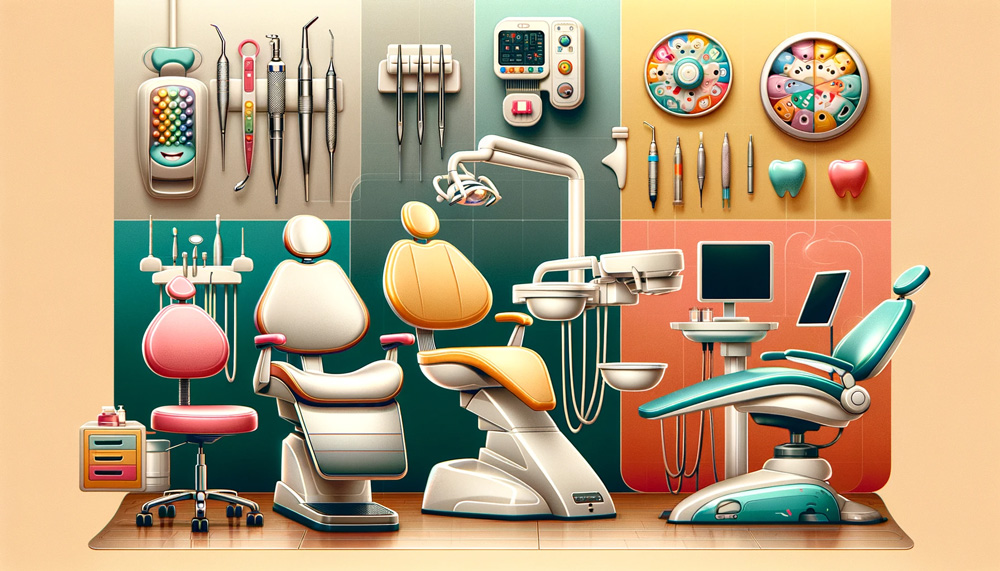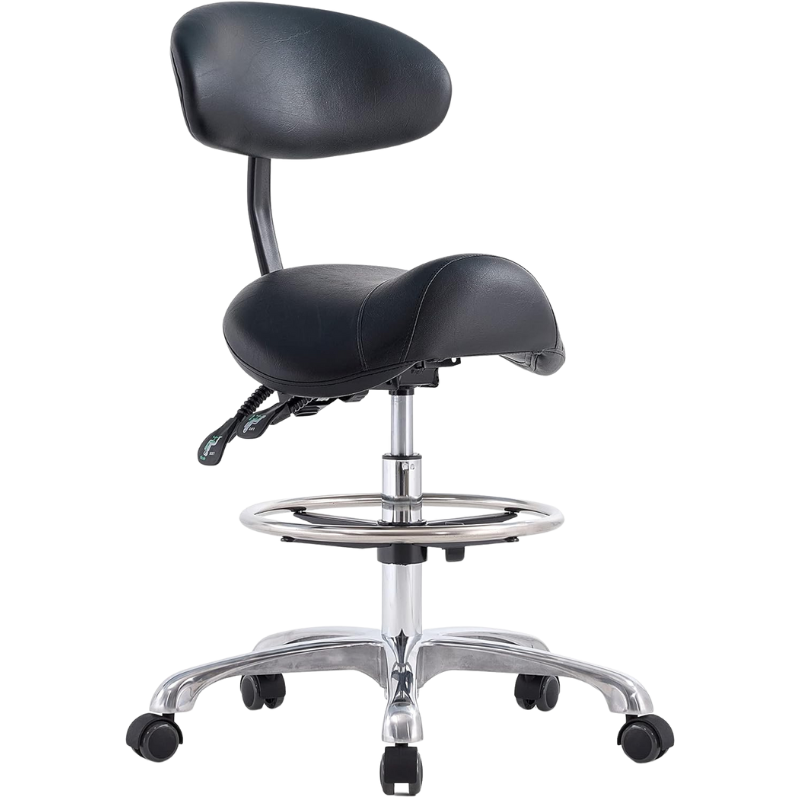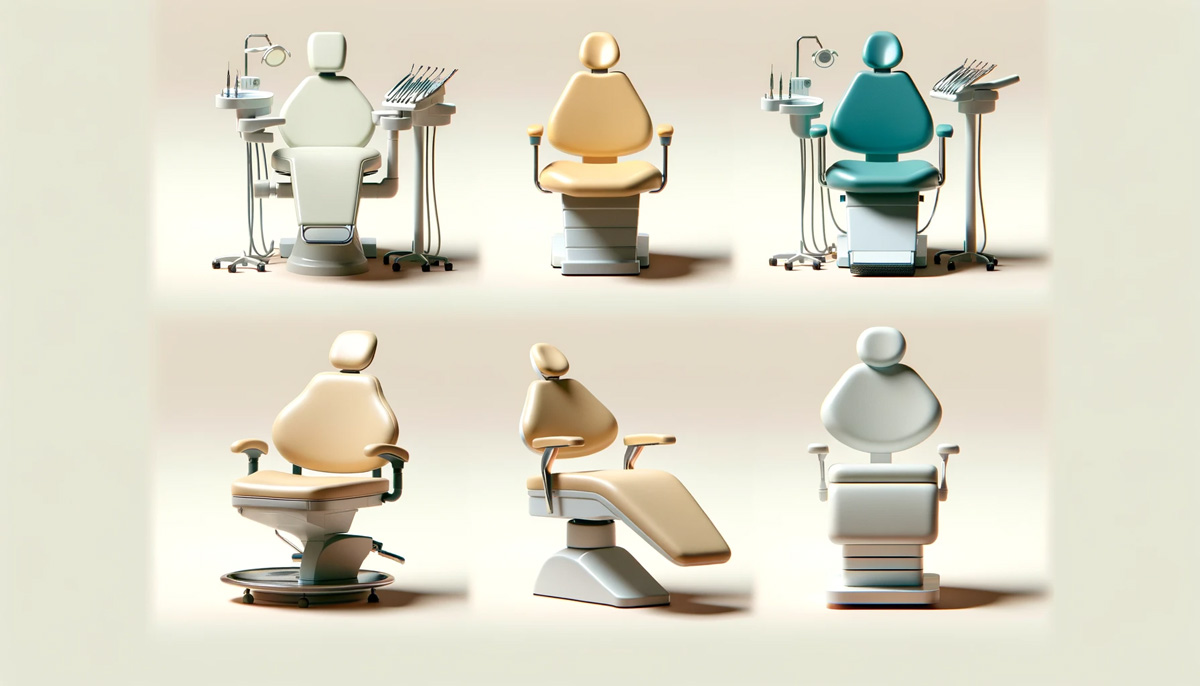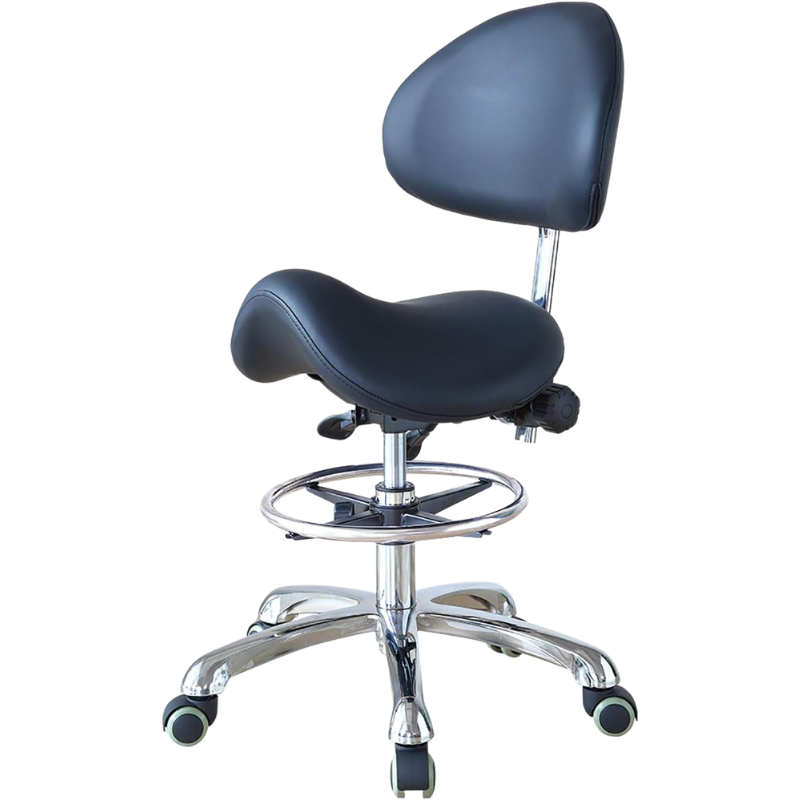As Dr. Michael F., a seasoned dental professional with over 15 years of experience in the field of dentistry, I have developed a deep understanding and appreciation for the tools of our trade.
After earning my Bachelor of Dental Surgery (BDS) and subsequently a Master of Dental Surgery (MDS) specializing in Orthodontics, my journey led me to delve into the world of dental ergonomics and chair design.
In this article, I aim to share my insights on the various types of dental chairs, their features, and the benefits they bring to both patients and dental practitioners.
Elevate Your Practice’s Comfort: Discover our premium Saddle Stool Dental Chair designed for maximum ergonomics and efficiency.

The Evolution of Comfort in Dentistry
The dental chair, often overlooked, is a cornerstone of dental practice.
Its evolution from a basic, rigid structure to a sophisticated, ergonomic piece of equipment mirrors the advancements in patient care and dental technology.
This journey of innovation is not just about comfort; it’s about enhancing the overall dental experience for patients and streamlining the workflow for practitioners.
The Importance of the Right Dental Chair

Enhancing Patient Experience and Dental Practice
Selecting the right dental chair is crucial. It goes beyond mere aesthetics; it’s about functionality, comfort, and the impact it has on the overall dental procedure.
A well-chosen chair can significantly improve patient comfort, which in turn, enhances their experience and perception of care received.
From an ergonomic standpoint, the right chair can also prevent occupational hazards for the dentist, ensuring longevity in practice.
Studies have shown that patient anxiety levels can be significantly reduced with the use of comfortable and adjustable dental chairs.
For instance, a study in the “Journal of Clinical Dentistry” highlighted a direct correlation between patient comfort and their overall satisfaction with dental care.
This not only impacts repeat visits but also influences the reputation of the dental practice.
Types of Dental Chairs

From Basic to Advanced
Dental chairs are not one-size-fits-all. They vary based on the type of dental practice and patient needs.
Standard chairs, commonly found in general practices, offer basic adjustability and comfort.
Pediatric chairs, designed with children in mind, often feature colorful designs and are smaller in size to accommodate younger patients.
Orthodontic chairs, on the other hand, are designed for longer procedures, providing enhanced support and adjustability.
Surgical dental chairs are equipped with additional features for complex procedures, such as greater range of motion and accessibility.
Each type of chair is designed with specific features to cater to the varying needs of dental procedures.
For example, a surgical chair may include additional lighting and arm extensions to facilitate complex surgeries.
Technological Advancements in Dental Chairs
Modern Features for Enhanced Care
The integration of technology in dental chairs has revolutionized dental care. Features like programmable positions, built-in X-ray viewers, and touchpad controls allow for a more streamlined and efficient workflow.
The ergonomics of these chairs have also seen significant improvements. Designs that support the natural posture of the dentist reduce the risk of musculoskeletal disorders, a common issue in the profession.
The impact of these technological advancements extends beyond comfort.
For instance, chairs equipped with intraoral cameras enable dentists to provide a more interactive and informative experience for patients, often leading to better understanding and acceptance of treatments.
Ergonomics and Patient Comfort

Prioritizing Patient Well-being
Ergonomics in dental chairs is not just about the dentist’s comfort; it significantly affects patient comfort as well.
Chairs that provide proper lumbar support and adjustable headrests can make a world of difference for patients, especially during longer procedures.
Real-life examples from my practice demonstrate this impact vividly.
Patients have reported a noticeable difference in comfort levels when treated in chairs with superior ergonomic features, often leading to reduced anxiety and a more positive perception of their dental experience.
Choosing the Right Dental Chair
Factors to Consider
Selecting the right dental chair involves considering various factors such as the size of the practice, the types of procedures commonly performed, budget constraints, and specific ergonomic needs.
Consulting with fellow dental professionals and reading industry reviews can provide valuable insights into making an informed decision.
Maintenance and Durability
Ensuring Long-Term Use
The longevity of a dental chair is dependent on regular maintenance and the quality of its construction.
Chairs designed with durable materials and easy-to-clean surfaces can withstand the rigors of a busy dental practice.
Regular maintenance, such as checking for loose parts and ensuring proper hydraulic function, is essential for the safety of both patients and practitioners.
In conclusion, the choice of a dental chair is a critical decision for any dental practice.
It affects not just the comfort of the patient, but also the efficiency and health of the dental professional.
As advancements in technology continue to evolve, the dental chair will undoubtedly see further enhancements, contributing to the ever-improving standards of patient care and dental practice efficiency.
FAQs about Types of Dental Chairs
-
What are the different types of dental chairs available?
Different types include standard, pediatric, orthodontic, and surgical dental chairs, each with unique features tailored to specific needs.
-
How does a dental chair improve patient experience?
Dental chairs with ergonomic design and adjustable features significantly enhance patient comfort, reducing anxiety and improving overall satisfaction.
-
What technological advancements are seen in modern dental chairs?
Modern chairs incorporate features like programmable positions, built-in technology, and ergonomic designs for improved care and efficiency.
-
What should be considered when choosing a dental chair?
Consider factors like the type of dental practice, functionality, budget, ergonomic needs, and patient comfort.
-
How does the right dental chair impact a dentist’s work?
Ergonomically designed chairs reduce the risk of musculoskeletal disorders in dentists and increase efficiency in dental procedures.
-
What maintenance is required for dental chairs?
Regular maintenance includes checking for loose parts, ensuring hydraulic functions, and cleaning to maintain hygiene and longevity.
-
Can dental chairs reduce patient anxiety?
Yes, comfortable and adjustable chairs have been shown to significantly reduce patient anxiety levels during dental procedures.
-
Are there dental chairs designed specifically for children?
Yes, pediatric dental chairs are designed to be smaller, more comfortable, and often feature child-friendly designs.

